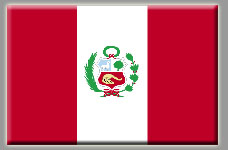


Cat's claws cultivation is region specific. “ U. guianensis may be cultivated in secondary forests with full sunlight, but U. tomentosa requires more shade, as it is found more often in primary forest.” Thus, the tropical climates of Peru and Colombia have made proper homes for the management and cultivation of cat's claw. As the bark of cat's claw is imported to American and European, manufacturers then prepare the product for consumption by putting it into capsule form.
One of the other issues Peru is capable of preserving is the ecology of the country. “ The Ashaninkas say that their form of cultivation is good for the jungle because that is the way the jungle is, and because it does not erode the land as occurs in the land cultivated by the colonists, who try to repeat the procedures they use in the Andean valleys where they come from, which causes the rapid erosion of the land.” The argument for ecological preservation and economic incentive is consistent with developing cat's claw as a geographic indicator as about “700 tons of cat's claw are sold each year in Peru and about 100 tons are exported every month.” If in fact the ecology is preserved through cat's claw production, then this is a win-win for environmentalists, economists, and proponents of indigenous rights.
In sum, cat's claw is not the solution to cure the Peruvian indigenous problems, but fostering its support as a geographic indicator provides jobs and ecological assistance to a state that is needy in both areas. It is also an opportunity for the Peruvian state to capitalize by establishing a comparative advantage over a medicinal product that is currently becoming an aid for HIV sufferers.
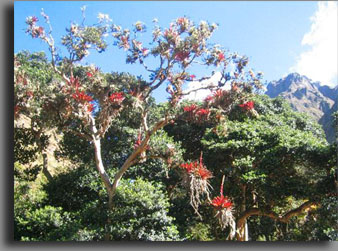

15. Trade Product Identification: Cat's Claw
16. Economic Data
By continuing the focus of trade relations between Peru and the United States , it is important to look at any pacts or agreements the two states have with each other. Any agreement between the two states has potential ramifications for the trade of cat's claw. While Peru and the rest of South America are discussing the merits of a multilateral and multinational free trade agreement, there is already an agreement in place between the United States and Peru as Peru participates in the Andean Trade Program (ATP).
“The Andean Trade Program (ATP, part of the Andean Trade Program and Drug Eradication Act or ATPDEA) retroactively renews and builds upon the recently-expired Andean Trade Preferences Act (ATPA) to further open U.S. markets to Peruvian products.” Other members include Bolivia , Ecuador and Colombia . The goals of ATP are multifaceted as it seeks to promote economic and democratic development, diversify exports, and reduce drug trafficking.
The ATP allows Peru to export to the United States certain goods without receiving duties. This continues to provide Peru unfettered access to its largest trading partner. “ As the leading ATPA exporter, in 2000 Peru accounted for 42.7 percent of U.S. imports under ATPA. Over 43 percent of Peru's $1.99 billion in exports to the U.S. entered under the ATPA. U.S. imports from Peru under ATPA increased in 2000 to $846 million, compared to $631 million in 1999.”
Problem Area
The overproduction of cat's claw has some trade analysts speculating over its value in western countries. Analysts have seen a sharp decline in Cat's Claw prices in the United States due to a surplus harbored in American laboratories. Over the years Cat's Claw imports remained steady, but demand for the product have not matched its supply. Ambitious Peruvian farmers extract the plants without considering the long term market value abroad. Because large scale extraction of Cat's Claw is the cause of the devaluation, forecasters recommend smaller scale indigenous groups farm the plant to increase Cat's Claw prices.17. Impact of Trade Restriction: High
18. Industry Sector: Pharmaceutical
19. Exporters and Importers: Peru and USA
Below is a list of the leading importers of cat's claw. Differences in weight and price are dependent on trade barriers and distance (i.e. difference between Japan and United States ).
 IV. Trade Clusters
IV. Trade Clusters12. Type of Measure: Import Standard

a. Directly Related to Product: Yes, Cat's Claw
b. Indirectly Related to Product: No
c. Not Related to Product: No
d. Related to Process: Yes, Culture

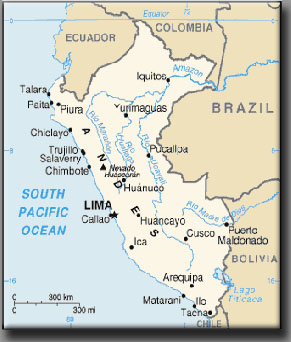
 V. Environment Clusters
V. Environment Clusters20. Environmental Problem Type: Species Less Land
The Peruvian indigenous Ashaninkas are the second largest ethnic group that inhabits the rainforests of Amazonian Peru. The herbal remedy, Cat's Claw, is suspected to have first become cultivated and consumed by the Ashaninkas. Thus, if cultural ancestral roots are deterministic for claiming geographic indicators then they have a legitimate right to do just that. While their ancestry traces back for thousands of years their future remains uncertain. Over the past fifty years the Ashaninkas have become decimated by conflict stemming from drug traffickers and the rebel group Shining Path. Moreover, the conflict has displaced many of the remaining Ashaninkas creating opportunities for opportunistic land developers to deforest the area and create farmlands.
The Ashaninkas unfortunately became victims in clashes between Shining Path rebels and government forces at the end of the last century. Several retaliation attacks occurred by the Shining Path on Ashaninka tribal areas near the Ene River to demonstrate to government officials and other tribal groups that cooperating with government officials was not tolerated. With rebels threatening the Ashaninkas' livelihood, many sought sanctuary in urban centers. Those that became displaced added to the volume of unemployment that already

which may become destructive to other areas of the environment. Cat's claw is a weed like organism that deprives other elements from growing. It is resilient to various climate changes and typically thrives in moist surroundings. While U. tomentosa is found in matured forests, U. guianensis is almost only found in secondary forests. Despite its resilience, deforestation poses a danger to its eradication.

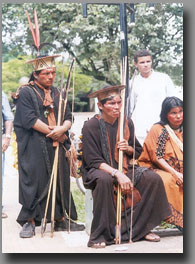
beleaguered Peru nationally. Those that stayed behind risked the fate of further assaults by Shining Path and land developers.
After the Shining Path dispersed individual tribes, confusion over land propriety enabled colonizers to move in. These colonizers make grabs for uninhabited land without consulting actual land entitlements. Once they have staked out a plot, they typically slash the land for monetary purposes. Despite a decree to demarcate Indian lands for various tribes the government has done little to preserve Ashaninka land entitlement. To further complicate matters, President Fujimori issued a 1995 Land Law that made it harder for tribal groups to claim their land. “ The 1995 decree not only demands that native communities obtain official recognition of their lands, but also registered land titles, which has created a temporal gap, of which lawyers for the colonists and logging companies have taken advantage to force the indigenous communities to leave.” Hence, Peru is faced with more displaced people at the expense of development.
Although the Peruvians deforesting the land provide quick income to those involved, it does not provide overall relief to the Peruvian economy. While economic hardships have fallen on all indigenous groups, the same can be said in Peru of all classes. According to the CIA factbook, ten percent of the population is unemployed and fifty-four percent of the people living in Peru live below the poverty line.
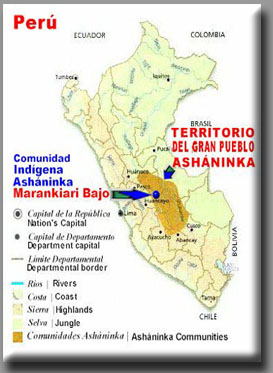

|
Number 772, 2004 by Chris von Spiegelfeld |
|
General Information Legal Cluster Bio-Geographic Cluster Trade Cluster Environment Cluster Other Clusters |

 I. Identification
I. Identification
1. The Issue
Una de Gato or cat's claw comes from a South American vine that is know to have herbal remedies for several ailments including diarrhea, appetite suppression, and fever. It has found popularity within the United States and Europe and become likened to other herbal remedies such as Echinacea and golden seal. It is extremely popular among the HIV community as its medicinal properties enhance the immune system. As more and more people attempt to acquire this herbal remedy for various illnesses, its trade becomes more valuable. This becomes a focus of interest for Peruvians since its origin has roots literally within the Peruvian frontier. If the Peruvians argue that cat's claw is a geographical indicator of their nation, then the WTO has to protect such a commodity from outside horticulture. Thus, this case study attempts to present issues to light that may encourage Peru to claim cat's claw as a geographic indicator.
2. Description
Though usage of cat's claw in the United States is a fairly recent phenomenon, the origin of its usage dates back several generations. “Cat's claw ( U. tomentosa ) has been used medicinally by the Aguaruna, Ashaninka, Cashibo, Conibo, and Shipibo tribes of Peru for at least 2,000 years. The Ashaninka Indian tribe in central Peru has the longest recorded history of use of the plant.” These groups, especially the Ashaninka, have found medicinal properties within the plant for a variety of different ailments. It is the stem and the root bark of the plant that retain the medicinal values it is known for. Though originally the indigenous people of Peru used the plant for common illnesses, its evolution is seen today as a quick fix to alleviate some of the pains from cancer and chemotherapy. Moreover, it has recently aided athletes in a tonic with restorative properties.
The root bark of the cat's claw is the most valuable property of the plant. There are two types of cat's claw sold through international commerce. U. tomentosa and U. guianensis are the major types finding their way on the market outside of Peru , but U. tomentosa has had the most commercial value. Despite a lack of American research, the alkaloid properties of U. tomentosa are more favorable to a Western market. Furthermore, there is suspicion that one alkaloid property has the ability to cancel out the immunostimulating effects in the other. Thus, researchers are still seeking the best method for consuming variations of cat's claw.
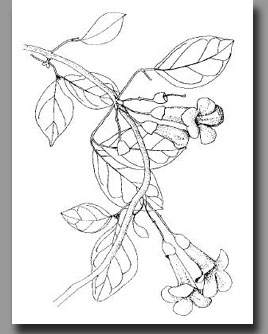
3. Related Cases
For the purposes of discussing cat's claw as a potential geographical indicator, it is necessary to examine if other research pertaining to geographical indicators has covered some of the fundamental attributes that cat's claw may become associated. Using the TED search engine, several queries were made to find similarities among the previous research students contributed to geographical indicators. On some occasions the queries were limited in their findings, while others were expansive. Determining which search method was better is still inconclusive as both tools drew different results depending on the searches implemented.
There were many cases that bared some semblance to the cat's claw case study, but there was always something missing such as locality, policy issue, or an extreme commodity difference. There was an exception. One case study became strikingly similar to cat's claw in almost all aspects. This was the Maca case study. It also is an indigenous plant cultivated in Peru , which is used for medicinal purposes within the United States and other countries. As this plant is an indigenous remedy to increase virility, it faces some of the same challenges for exportation as a medicinal herb that helps to cure digestive ailments. While there are significant differences between healing properties, their likeness stems from import/export issues, indigenous tribal claims, and intellectual property rights. Other cases to take into consideration are the Turkish bulb trade, the Orchid, and the Ginseng cases.
4. Author and Date: Chris von Spiegelfeld 12/07/2004

 II. Legal Clusters
II. Legal Clusters 
Legal Aspects for Peru to Consider when Exporting Cat's Claw
Since Cat's Claw is an herbal medication with hardly any scientific backing on its safety, it risks running into regulations from states trying to block it under the WTO's Sanitary and Phyosanitary Measures Agreement (SPS). The SPS measures agreement is very similar to the Technical Barriers to Trade Agreement (TBT) since it applies the issue of inspection standards. SPS allows countries to decide by its own standards what is acceptable for consumption and environmental safety. Thus, food, animal and plant that are dangerous for
human consumption or may affect animal or plant life are screened out by SPS measures. Though the WTO encourages countries to abide by international standards in determining SPS regulations, it is not mandatory for a state to comply. The WTO does request states to provide scientific evidence to justify blocking another state's agricultural products. While the science used to justify blockage can not arbitrarily single out products, a state may choose to implement a higher degree of standards which prevents products that fail inspection from becoming imported.
If Peru is concerned about SPS regulations preventing its agricultural goods from entering a foreign state, it has a chance to contest the import restriction. Countries that institute SPS regulations must provide other states in advance changes to the standards at which they regulate. In addition, an enquiry contact or reference point must detail the measures that are to occur on inspection standards. If Peru demonstrates that its exportation of a product complies with the regulation set by the foreign state then it is expected that the foreign state lift the restriction.
Under the current trade relationship between the United States and Peru , the trade of Cat's Claw is permissible. The United States imports the greatest amount of Cat's Claw among the top ten importers of the substance. Thus, it is relevant to discuss the nature of American import statutes. Despite the ambiguous merits of Cat's Claw, there is adequate scientific evidence that merits it a dietary supplement classification. According to the Federal Food, Drug, and Cosmetic (FD&C) Act of the Food and Drug Administration (FDA) dietary supplements have similar rights to foods with the exception to labeling. Labeling for dietary supplements must provide accurate information and can not mislead the consumer. In the matter of importing dietary supplements, unless such product is contaminated with a substance or likened to a substance that is listed on the imports alert schedule, its importation is permissible. Therefore, the “dietary supplement” classification is necessary for cat's claw importation success.
As exampled in the American import standards, each state has certain nuances in their food and drug import legislation that exporters have to take into consideration. If such rules are not explicitly provided then Peru has a right to challenge any SPS measures that subsequently block their imports. While SPS measures are necessary to prevent unsanitary goods from crossing over borders, they have potential to become a non-tariff barrier. Therefore, states should scrutinize arbitrary SPS measures when there is no substance to back them up.
Legal Aspects Other Countries Should Consider if Peru is to Institute Strict Codes for Cat's Claw Production
Despite the WTO's Agreement on Trade Related Aspects of Investment Measures (TRIM), some developing countries are still noncompliant with the rules of the agreement. According to the agreement states are to remove barriers or quantitative restrictions on the trade of goods. While quotas are probably of no concern to the trade of cat's claw, investment may become a different matter. Depending on the rules that determine the Cat's Claw status as a geographical indicator, it is important to consider what restrictions are placed on the investment of foreign firms. If foreign direct investment is prohibited then a geographical indication is running the risk of violating the TRIM Agreement. Contrary to this situation is the encouragement of foreign investment for Cat's Claw production. These overarching international rules are in conflict with the state laws of Peru.
Peru continues to liberalize land for foreign direct investment. Land speculators are even able to extract and trade in cultivated goods by obtaining the necessary permits. Where this liberalization runs into conflict is the decisiveness of the state to execute intellectual property rights for the protection of the environmental state. Under Peruvian state laws, the government reserves the right to cease extraction and cultivation when the natural state of the environment is endangered. Moreover, the state reserves the right to prevent the exploitation of natural resources if such resources originated in their country. Under these conditions, Peru arbitrarily decides when the exploitation of a natural resource is advantageous for the state and who is permitted to do the extraction.
6. Forum and Scope: USA and Bilateral
7. Decision Breadth: 2
8. Legal Standing: Treaty
 III. Geographic
Clusters
III. Geographic
Clusters9. Geographic Locations
a. Geographic Domain: South America
b. Geographic Site: Eastern South America
c. Geographic Impact: Peru
10. Sub-National Factors: Yes
11. Type of Habitat: Tropical
Cat's claw farmers run the risk of over cultivating the product,
The major actors involving the trade of cat's claw are the United States and Peru . Peru exports the product to the United States as well as other countries, but no other country imports and consumes as much as the United States . There are several issues that exporters and importers have to consider when trading cat's claw from Peru to the United States . Below is a list of rules and regulations that individuals are subject to in the trade of cat's claw.
13. Direct v. Indirect Impacts: Direct
14. Relation of Trade Measure to Environmental Impact :
Table 1: Leading Importers of Cat's Claw according to Ministerio de Agricultura/ Peru Forestal en Numeros Ano 2000.
|
Country Importing |
Value in dollars (mil.) |
Net Weight (kg) | |
|
Una de Gato (Cat's Claw) |
United States Japan Spain France Argentina Mexico Austria Germany United Kingdom Russia |
178,118.76 110,270.30 71,091.68 44,826.00 15,237.00 13,350.00 10,393.15 7,842.00 7,318.00 5,054.00 |
86,853.88 6,587.11 25,698.72 218.10 5,479.00 6,000.00 545.00 3,000.00 699.32 50.80 |
Displacing indigenous people only adds to these numbers. Moreover, the indigenous laborers suffer from an ethnic disadvantage that other classes do not have to worry about. For example, “more than two-thirds of the country's indigenous people work in agriculture, earning just one-third of what non-indigenous farmers earn.” The indigenous groups in Peru are treated more or less as second class citizens. As their land rights are abused, their chances of reemerging into urban society without racial biases are slim.
However, there is a solution to the Ashaninka displacement. If land preservation is restored for them, then the government not only has found a place to put the homeless indigents, but they can also hope that such groups exploit their crafts and products to claim geographic indicators. Some indigenous persons have already found profitable ways of marketing goods by incorporating internet sales. “ Ashaninkas have already lined up at public Internet booths to peddle their crafts on the World Wide Web.” Thus, there are monetary inclinations to reestablishing the Ashaninka people as well as other rewards.

21. Name, Type, and Diversity of Species
Name: Cat's Claw or Una de Gato (Uncaria tomentosa and Uncaria guianensis)
Type: Weed
Diversity: Grows in secondary, closed mature or slightly disturbed forests.
22. Resource Impact and Effect: High and Product
23. Urgency and Lifetime: Low and 5-10 years
24. Substitutes: Like Products

 VI. Other Factors
VI. Other Factors25. Culture: Yes
26. Trans-Boundary Issues: No
27. Rights: No
28. Relevant Literature
Anonymous, "Victims in the Forest," The Economist , Aug 28, 1993.
Cabieses, Fernando. The Saga of the Cat's Claw. Lima: Via Lactera Editores, 1994
The Central Intelligence Agency, Cia - the World Factbook - Peru (CIA, 2004, accessed 2004); available from http://cia.gov/cia/publications/factbook/geos/pe.html#Econ.
Fraser, Barbara and Paul Jeffrey, "Fighting for Rights after Centuries of Discrimination," National Catholic Reporter, 2004.
Hemmingway, S.R. and J.D. Phillipson. Alkaloids from South American species of Uncaria (Rubiaceae)." Journal of Pharmacy and Pharmacology, 1974. suppl.; 26:p. 113
Intermediate Technology Development Group - The Processing and Sustainable Management of Amazonian Medicinal Plants (ITDG, 2004 accessed Nov. 2004); available from http://www.itdg.org/docs/agroprocessing/food_chain_26.pdf.
Jong, Wil de, Mary Melnyk, Luis Alfaro Lozano, Marina Rosales, and Myriam García. "Uña De Gato: Fate and Future of a Peruvian Forest Resource." Jakarta: Center for International Forestry Research, 1999 available from http://www.cifor.cgiar.org/publications/pdf_files/OccPapers/OP-22.pdf.
Katz, Ian and Elisabeth Malkin, "Battle for the Latin American Net," Business Week , November 1 1999.
Lama, Abraham, "Ahaninkas Displaced from Their Lands," InterPress Third World News Agency (IPS) , April 22 1998.
Map of Ashaninka Area in Peru: Mountain Forum Online Library.
"Nature's Biggest Sellers", Newsweek, November 6, 1995, p. 68.
Peru - Cat's Claw , (United Nations Development Programs, accessed September 25, 2004); available from http://www.tve.org/ho/doc.cfm?aid=627.
Portillo, Zoraida, "Colonisation Threatens the Ashaninka," InterPress Third World News Agency (IPS) , January 22 1999.
Raintree Nuitrition Tropical Plant Database (accessed December 3, 2004); available from http://www.rain-tree.com/catclaw.htm.
Scheck, Jack, "Cat's Claw: Treasure of the Amazon", Explore More!, July/August 1996.17: p. 25-26.
Stuppner, H., et al. "A differential sensitivity of oxindole alkaloids to normal and leukemic cell lines." Planta Medica, 1993. suppl.;59: A583.
